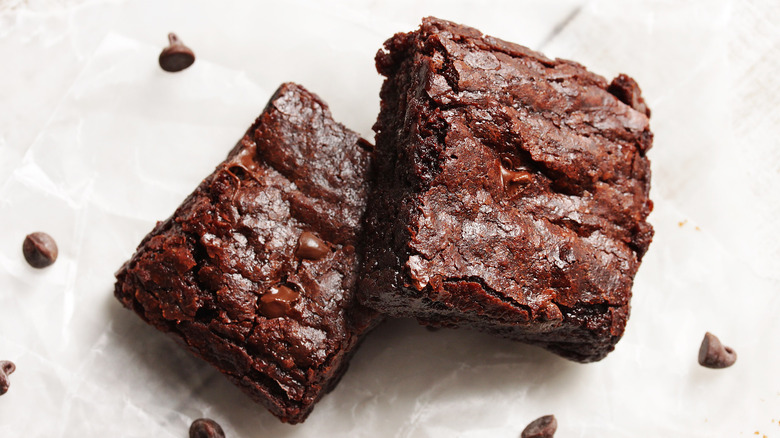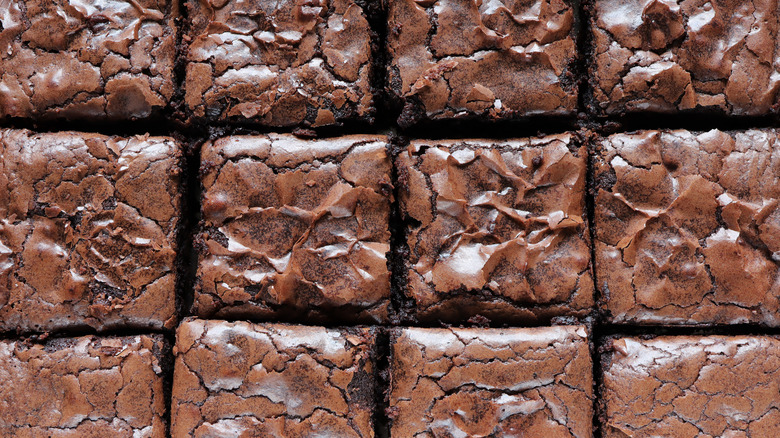The Sugar You Should Use For Brownies With A Shiny, Cracked Top
If you're a chocolate lover, you're more than likely a brownie lover. Brownies are one of the sweetest, warmest, and most satisfying desserts Americans indulge in. Whether they're baked extra fudgy or enriched with coffee, they are sure to be a favorite treat in any kitchen. Delighted Cooking describes brownies as a dense chocolate cake though usually served as square bars rather than triangular slices, and often topped with whipped or ice cream.
According to The Nibble, brownies are relatively new to the world of desserts. They likely originated in the United States and recipes were first printed at the beginning of the 20th century. However, there is no definitive idea of how exactly the brownie was first baked into existence or who did it. Instead, there are a bunch of legends accumulated over time.
Ultimately, the brownie is meant to be a cocoa lover's heaven with a dense, chewy center and a shiny, crackling top, but that glossy delicate crust on the surface is not always easy to achieve.
The science behind the sugar
A batch of brownies looks all the more appetizing with an attractive, glazed top. According to America's Test Kitchen, only brownies made using a particular type of sugar can achieve this glistening layer. Granulated sugar is the key to any batch of shiny brownies because the sucrose in granulated sugar will create a fine crystal surface over the top of a brownie once it's out of the oven that is smooth enough to reflect light. This process doesn't work with corn syrup, brown sugar, or molasses – only granulated sugar. So if you are switching out your sugar with a different ingredient and wondering why your brownies don't look the same, that's why.
King Arthur Baking says one of the best ways to ensure you get that shiny layer is by first melting your sugar and butter together when beginning your brownie-making process. When the sugar and butter are melted together, the butter's fat and water separate and the water dissolves the sugar before the brownie batter hits the oven. This allows the sugar to rise to the surface and become exposed to the direct heat of the oven when the batter bakes. The oven's heat re-crystallizes the sugar and creates that lovely gossamer illusion.

